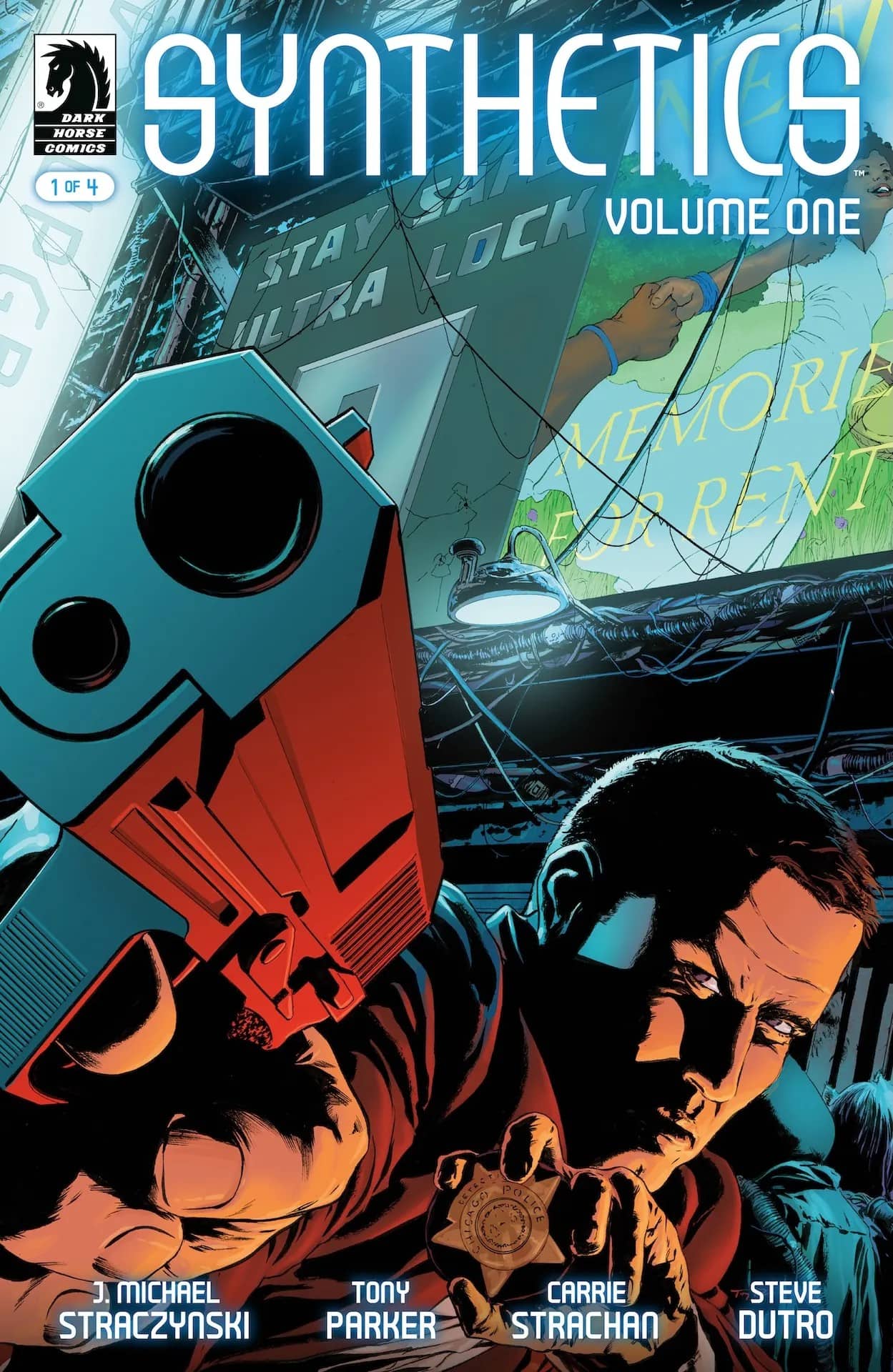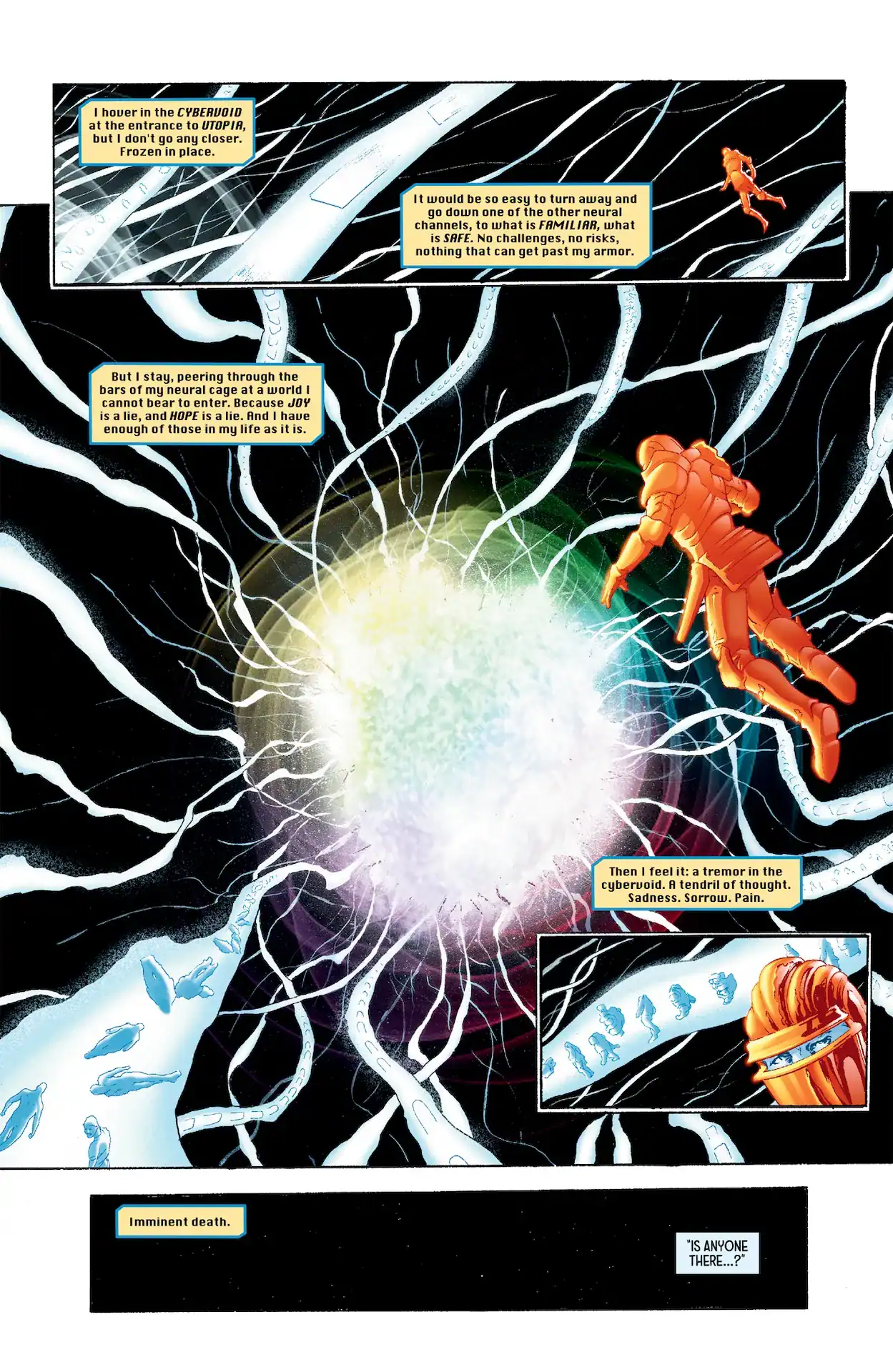Synthetics Volume One #1

Recap
On a dying Earth filled with expanding dead zones, humans form rage gangs to vent their anger at futures lost or escape into the cyber-void to avoid thinking about what's coming. Our only hope of survival rests with a new kind of human. Will their appearance in a desperate world be met with acceptance — or destruction? Are they angels, devils, or the latest iteration of a Frankenstein's monster?
Review
Straczynski kicks off Synthetics Volume One #1 with a few pages touching on existentialism and metaphysics. These big ideas quickly lead into a recognizable story: an Earth that can no longer support human life and the possibility of creating artificial bodies that can replace the doomed human ones. The dying Earth component is the result of environmental damage, and the characters make explicit the fact that the planet will be uninhabitable in a matter of years. Straczynski touches on the notion that it is human actions and the failure to respond to the consequences that ultimately caused the planet’s deterioration.
Synthetics Volume One #1’s biggest strength are the larger themes Straczynski is playing with and which the characters and plot are primarily drivers of. Most of these relate to identity. Neuralink technology allows people to connect to each other. A character is dying alone in the issue’s opening pages and is calmed and helped along to whatever comes after death by the many people connected to him at that time. But at the same time, there’s a risk of losing oneself in the neuralink–something that a detective named Nick is at risk of.
Nick is also the only character with an internal monologue. It begins while Nick is jacked into the neuralink. The internal monologue captions use a smaller, sharper font. The boxes have shaved corners. The black font is set against a light yellow field bordered by a thin blue line. These boxes contrast starkly with the color palette around them. Starting as it does in the neuralink, the caption boxes’ appearance gives Nick’s internal monologue a technological rather than organic appearance.

The neuralink technology is only the entry point into the bigger idea in Synthetics Volume One #1. The issue plays with the ability to buy and sell memories and how that might override someone’s actual personality. Elsewhere in the issue, when discussing the ethics of creating artificial humans, a Ship of Theseus type thought experiment is posed about whether a person with replaced organs and limbs ceases to be a normal human at a certain point.
Character development is limited in Synthetics Volume One #1. They mostly drive Straczynski’s larger themes and plot. From that point of view the characters are effective. As characters to sympathize with in their own right, though, there is little to connect with as a reader.
One major exception is the character dying on Synthertics Volume One #1’s first pages. He’s alone and afraid to die that way, so he reaches out on the “neuralink” that provides a cyber connection to other people. In addition to introducing the neuralink technology, this nameless character provides an emotional “in” to the issue for the reader.
Any limitations on character development in Synthetics Volume One #1’s narrative are reduced by the art. Parker’s work is highly detailed, and this is especially valuable in adding emotion to all the characters involved. A somewhat academic discussion about the ethics of creating artificial human bodies takes on greater tension thanks to linework around characters’ facial features, especially eyes and mouths. A lack of extra detail on a character later in the issue makes him seem dead inside, especially in comparison to everyone else.
This level of detail extends beyond characters into the larger world of Synthetics Volume One #1. Parker is liberal in his use of lines. Shading isn’t especially subtle; he mostly leans toward fields of black to create depth in objects, clothes, and backgrounds.
Strachan’s color scheme is vivid but soft. There is little contrast between the various colors in any particular panel, but the rich colors contrast well with the dark shading Parker employs.
The most eye-catching color scheme is on display early in the issue when the inside of the neuralink is depicted. Strachan uses a blend of bright colors, all of which push toward a faded white. This is contrasted against an empty black field. The mixed colors that approach whiteness makes for an interesting representation of a group connection that the neuralink represents.
Final Thoughts
This is a first issue with big ideas. Story and character details are minimal, but there are enough to set the stage for those big ideas. Synthetics Volume One #1 is a high concept comic perfect for science fiction fans.
Synthetics Volume One #1: Big Ideas
- Writing - 9/109/10
- Storyline - 7.5/107.5/10
- Art - 8/108/10
- Color - 7.5/107.5/10
- Cover Art - 6/106/10





